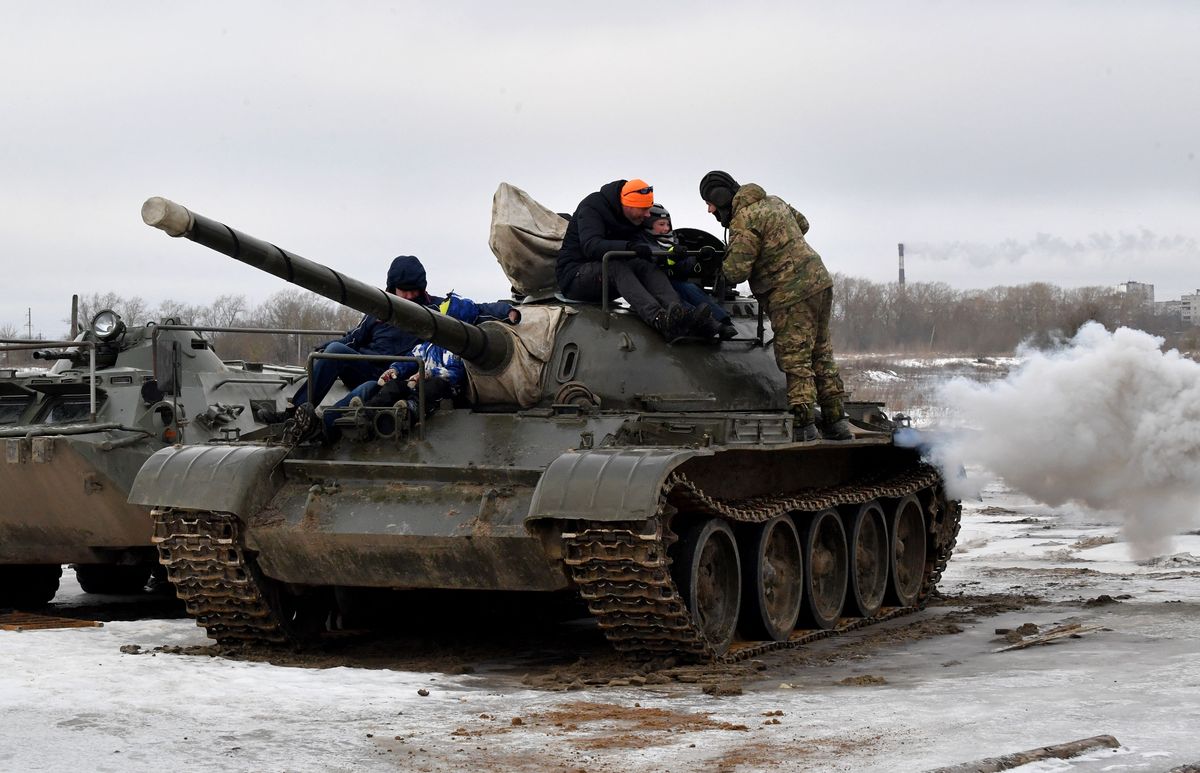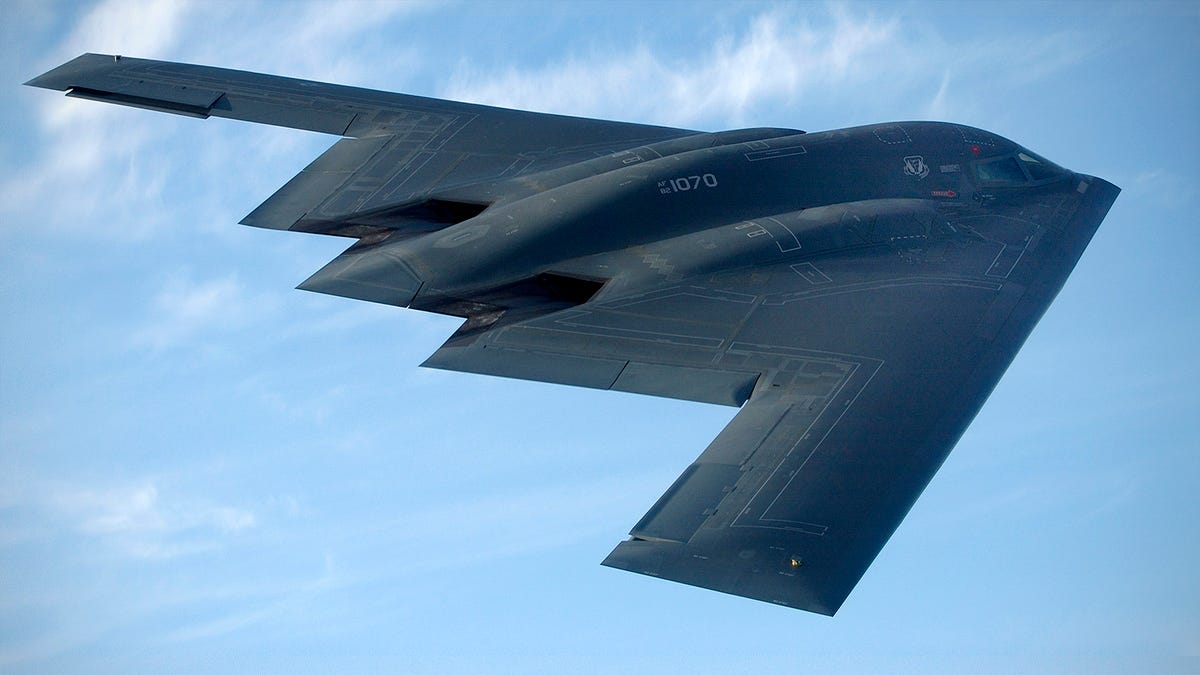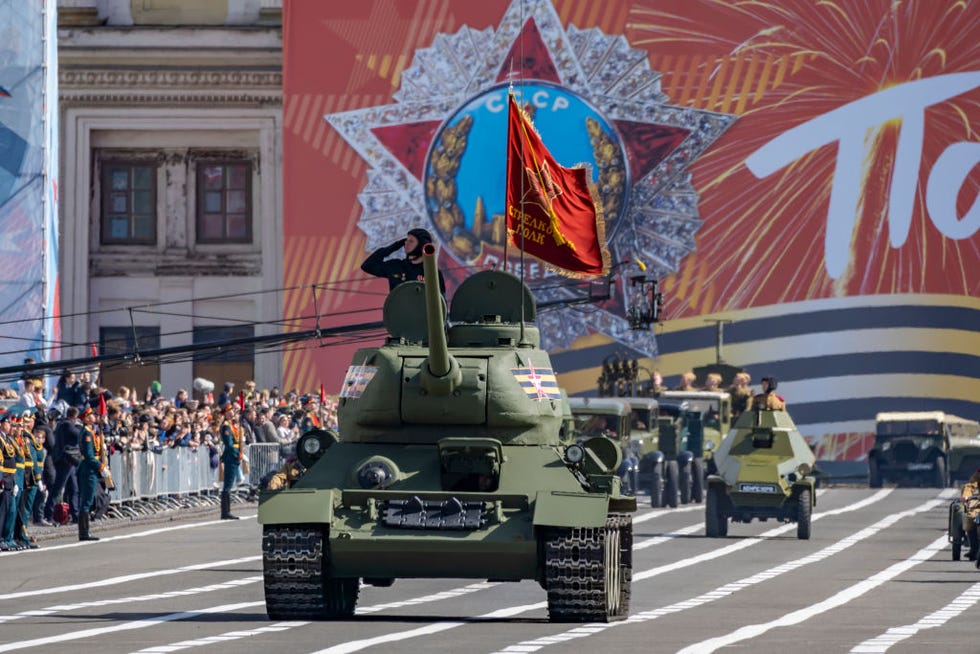SÉBASTIEN ROBLIN

In late March, photos of tank-laden trains unearthed on Russian social media strongly suggested that Russia had finally begun reactivating some of its thousands of old T-54B tanks in deep storage for use in combat in Ukraine, due to massive losses of more modern T-72, T-80 and T-90 main battle tanks.
The T-54 entered production in the late 1940s, and has a crew of four—unlike Russia’s modern three-person tanks.
Photos in April showed the tanks had indeed arrived in Ukraine, without much in the way of visible upgrades such as add-on bricks of explosive reactive armor.
Now, according to social media posts by Andrei Tarasenko, proprietor of tank-themed Russian-language website btvt.info, sources in the Russian military say that T-54s are indeed being deployed into combat—supposedly used not so much as tanks, but as armored artillery vehicles firing indirect shells at distant targets.
This content is imported from twitter. You may be able to find the same content in another format, or you may be able to find more information, at their web site.
The post states a company of T-54Bs and T-55s (ordinarily 10 or 13 tanks in the Russian military) was transferred to an artillery regiment active in southern Ukraine. Despite a T-54 ordinarily requiring a crew of four (commander, driver, gunner, loader), the post claims these T-54s were operated by crews of three, presumably due to the limited need to simultaneously move and shoot. Reportedly, the crews were drawn from both the artillery and tank branches—instead of just the latter—and received just one week of training. Elsewhere, he posts that there already exist artillery firing tables for the T-54/55 and their 100-millimeter guns.

The B-2 Can Carry a 20 Ton Payload 6,000 Miles without Refueling
A picture posted later shows a T-54 concealed in a muddy wilderness area with a two-layered “cope cage” of armor over the turret, probably in the hopes of protecting against attacking drones and anti-tank missiles with tandem charges.
This content is imported from twitter. You may be able to find the same content in another format, or you may be able to find more information, at their web site.
Subsequent posts by the same blog indicate that Russia originally intended to use slightly less outdated T-62M tanks in the artillery role, but that those ended up being assigned to frontline units with an assault roles.
The technical condition of the T-62Ms—which have been modernized with reinforced BDD laminated BDD armor on the front turret, and were mostly dispatched to the Kherson region—is described as being at “bottom level.”
Tarasenko writes that many T-62Ms were left behind during a personnel rotation and ultimately abandoned when Russia withdrew from the west bank of the Dnieper River in November 2022, leaving them to be captured by Ukrainian forces.
Russia’s confirmed loss of at least 2,000 tanks destroyed, abandoned, or captured, and had already clearly forced Moscow to tap into increasingly rusty reserves when it began reactivating T-62s in the summer of 2022. The 2023 Victory Day parade in Moscow—ordinarily a tank-stravaganza—featured only one tank, a World War-era T-34/85 tank.

The lone tank at Moscow’s 2023 Victory Day parade: a T-34/85 tank most extensively used late in World War II.VCG//Getty Images
Tank as Artillery: Good or Bad Idea?
The re-purposing of tanks to serve as ersatz indirect-fire artillery, arcing shells over longer distances, has a long history. And, undoubtedly, Russia now wants to deploy more artillery into Ukraine, and make more shells useable for artillery missions—even though large-scale indirect fire is not an ideal use of a tank’s main gun.
That’s because tank guns are designed to discharge shells at very high velocities to maximize down-range armor penetration and accuracy—a method that imposes more stress on the gun barrel. This means the barrel usually must be replaced after several hundreds shots, or risk bursting.
Purpose-design howitzers and field guns, however, don’t need so much armor-penetrating velocity, and are built for much longer barrel lives. So, tanks dedicated to artillery missions will wear through their valuable gun barrels much more quickly than purpose-built howitzers.
That said, the T-54’s 100-millimeter D10T gun (introduced in World War II on the turretless Su-100 tank destroyer) is not as valuable as the modern 125-millimeter 2A46 tank guns used on modern Russian tanks. And stores of 100-millimeter shells compatible with the D-10T likely haven’t been as extensively tapped as standard Russian 122- and 152-millimeter artillery shells. Thus, the supply of 100-millimeter high-explosive shells—though less effective—may at least be easy to source.
It’s also worth noting both Russian and Ukrainian tankers have, in videos, occasionally executed unusually precise indirect-fire attacks against individual enemy vehicles by using drone spotters to correct their fire. However, such tactics only appear to be getting implemented improvisation in the field, particularly as there is a voracious demand for drones across both militaries.
Despite supposedly being used as artillery, it seems likely the Russian T-54s will, at some point, be asked to provide direct fire support—perhaps to help Russian units in a particularly bad pinch, or for use defensively as a moving pillbox.
Tanks—even those as old as T-54s—do have an impact on morale on the battlefield, especially for dismounted troop. In an interview filmed by the New York Times, a Ukrainian medic described:
“It’s scary when a tank is shooting at you. When it’s a mortar firing, you can hear where it goes, where it’s going to land. When it’s a tank, you can hear it fire, and then the shell lands immediately. You can’t tell where it’s going to land. It happens in a split second. There’s a bang, and it lands before you even hear it.”
This content is imported from youTube. You may be able to find the same content in another format, or you may be able to find more information, at their web site.
However, while T-54s provide some basic firepower and armor protection, their 1950s-era designs will still be very vulnerable to modern anti-tank weapons. They will also be unable to penetrate the frontal armor of opposing main battle tanks, and lack the sensors and fire control to be first to detect and accurately hit more distant enemies—particularly at night. So, the crew of those T-54s likely really do hope they continue to serve only in an indirect fire role.
Ukraine, too, has begun inducting a variant of the T-55 tank called the M-55S in its 47thAssault Brigade. However, this is a heavily upgraded Slovenian variant armed with capable Western 105-millimeter guns and fire control systems.
No comments:
Post a Comment